Buffalo MiniStation Thunderbolt Review - An External with USB 3.0 and Thunderbolt
by Brian Klug on August 1, 2012 4:04 PM EST- Posted in
- Storage
- SSDs
- USB 3.0
- Thunderbolt
- Buffalo
Part of what makes the Buffalo MiniStation Thunderbolt unique is the inclusion of USB 3.0 alongside, well, Thunderbolt. Going with a Thunderbolt only drive is admittedly a difficult prospect to swallow - what happens if your only Thunderbolt-packing computer dies, for example, and you need files on the drive? Having legacy interfaces is just something everyone has grown accustomed to, and what that usually ends up meaning is that USB needs to be onboard.
Buffalo told me that they worked with Intel and Apple to develop a switching system for deciding which controller to switch SATA from the drive to, and that this system is unique to the MiniStation Thunderbolt for now. To find out more, I had to open up the drive. To be honest, well, I was always going to open the enclosure…
I wager a lot of other potential customers are interested in putting an SSD inside the MiniStation Thunderbolt and taking advantage of the interface’s basically native transfer speeds. Unfortunately, getting the MiniStation apart is somewhat challenging. Disassembly starts by prying the top plastic cover off, which is connected via plastic clips to the drive tray, which is in turn adhered to the aluminum base with some sticky double sided foam tape.
I ended up having to apply a lot of force to separate things, and for me the adhesive was what gave first while prying on the top part of the drive. Armed with this knowledge, people trying to take apart the drive assembly should probably heat the underside with a heat gun before prying the top off with a plastic opening tool. After this comes up, there are plastic clips and a few screws in your way securing the drive to a plastic cage. It’s clear the black part sits in the aluminum tray, and the top white plastic part snaps over this.
With this apart, you can separate the PCB which runs under the 2.5" HDD inside the drive. In the case of my 500 GB model, the drive is a SATA 3.0, 5400 RPM, 8 MB cache, Samsung ST500LM012. I’m not sure what the 1 TB model uses since I wasn’t sampled one, but likely the same family.
The board runs almost the full length of the HDD underside, and there’s a fair number of packages onboard. On the topside we can find the Intel DSL2210 (codename: Port Ridge) endpoint Thunderbolt controller, which is a single Thunderbolt channel, 2 PCIe device with 0.7W TDP. Port Ridge is popping up in a lot of places, for good reason - it’s inexpensive, second generation, small, and has a low TDP. What it sacrifices is pass through functionality or additional Thunderbolt channels.
At center, below the DSL2210 is an ASmedia AS1061 PCIe-1x to SATA 3.0 controller. This is clearly the controller used when the MiniStation is connected over Thunderbolt. Again, Thunderbolt basically tunnels either PCIe or DisplayPort, you need a fully fledged PCIe controller on the other side for whatever you’re connecting to.
At top left under the USB 3.0 controller is a MediaLogic MDLU03 USB 3.0 to SATA 3.0 controller, which obviously gets used when the drive is connected over USB. On this side of the board there are a few other things, like a step-down converter for Thunderbolt power, a tiny 512 Kbit flash, and three white LEDs (with pads for two more) at the bottom.
So you’re probably wondering, well, how does the device switch between the MediaLogic USB 3.0 controller and the ASmedia controller? The answer is on the other side of the PCB.
Here on the back side of the PCB there’s both an ASmedia ASM1456 SATA 3.0, 2 to 1 multiplexer/switch, and an NXP LPC1114F (PDF) microcontroller with an up to 50 MHz ARM Cortex M0 at its core. This controller undoubtably contains the management and logic which tells the switch which SATA controller to choose between. There’s also something a little bit ironic about Intel having to recommend use of an ARM Cortex M0 controller for its platform for Apple and Buffalo - it seems like making a next generation Thunderbolt controller with a tiny controller or AP of its own onboard would make a lot of sense.
There’s a ton of integration here to do what seems like a simple task, but the end result is a drive which will connect and switch between USB 3.0 and Thunderbolt and handle the edge case where someone decides to connect both at the same time. The only real next level is for future Thunerbolt controllers to offer some onboard AP purely for devices like this with multiple I/O. Maybe we’ll get a third generation Thunderbolt SKU with SATA built in, that would seem logical.
After I ran performance numbers and testing on the MiniStation with HDD inside, I disassembled the MiniStation and tossed in an OCZ Vertex 3 MAX IOPS, which works perfectly. Getting the MiniStation back together is a bit of a challenge, but not impossible - I just don’t want to do it again, and with those plastic clips and adhesive would only recommend disassembly and reassembly once. That’s the tradeoff which gets made for having a drive with no external screws.


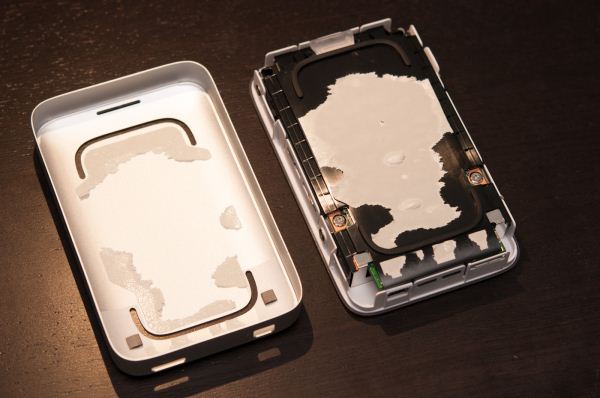

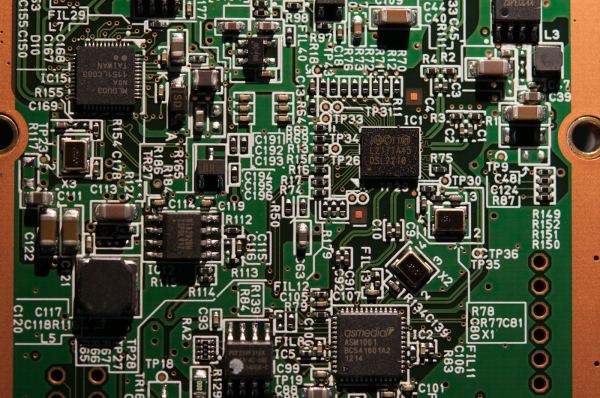
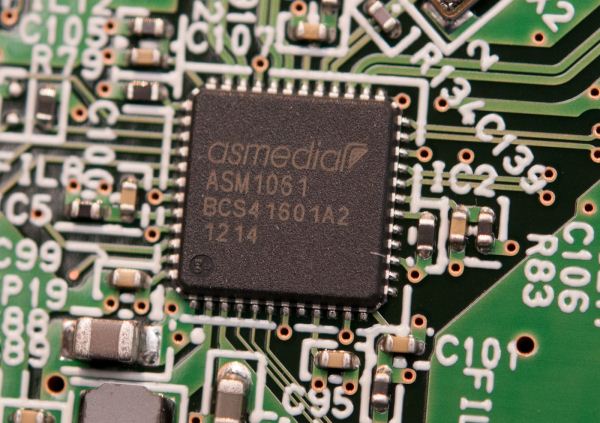
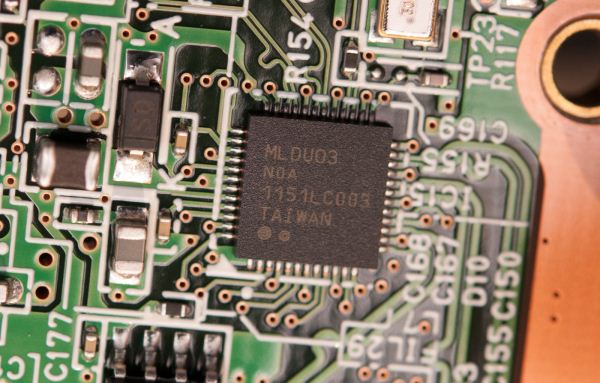
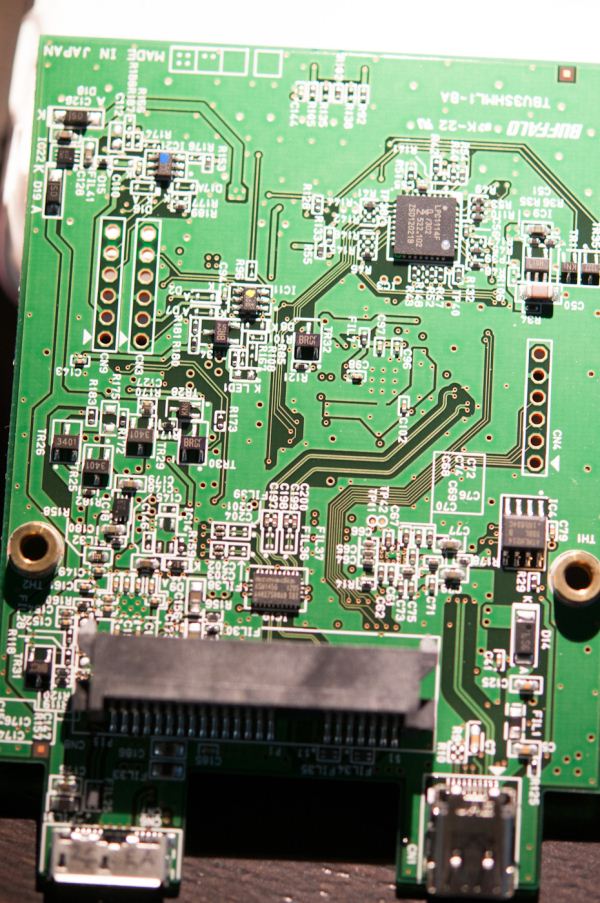















61 Comments
View All Comments
scubaboy - Friday, November 30, 2012 - link
No, because all of Apple's current lineup of machines, with the exception of the Mac Pro, have multiple (either 2 or 4) USB3 ports. In addition to 1 or 2 TB ports.http://www.apple.com/why-mac/compare/
Lonyo - Thursday, August 2, 2012 - link
It's not a loaded question.The drive has no passthrough, therefore you are ONLY able to connect a single harddrive.
It's irrelevant what Thunderbolt can potentially do as a port, the port itself becomes totally irrelevant once you close it off by connecting this drive.
It doesn't matter if the port can do display connections, or anything else. Once you connect this particular drive, it can't, it can just access this drive.
Which is exactly the same as a USB drive would be.
Yes, Thunderbolt has other uses, but none of them are relevant when you use a drive without passthrough. Unless you are connecting it to the other end of a Thunderbolt device which DOES have passthrough, you are simply using Thunderbolt in the exact same way you would use a USB3 port, meaning any port advantage whatsoever is nonexistent.
Which is also why I said "With THIS drive", meaning this specific drive, not Thunderbolt drives or devices in general.
And I said "this drive" more than once, to try and make it clear I meant THIS drive.
repoman27 - Thursday, August 2, 2012 - link
Well, you could put this drive at the end of a chain of other Thunderbolt devices. It doesn't so much limit the port as it does the chain.MobiusStrip - Thursday, August 2, 2012 - link
The lack of passthrough is moronic. Talk about missing one of the points of Thunderbolt.sridhar.uta - Friday, August 17, 2012 - link
Of course you can see actual advantages of thunderbolt over usb3.0 only when you get into SSDs. Given the rate at which SSD prices are coming down, thunderbolt is definitely going to make a difference compared to usb3.0.But if all you want to do is stick a single HDD, then you are right you wont see any difference using a thunderbolt or usb3.0. Other than the only added advantage of daisy chaining in thunderbolt.
But I would it is not a proper comparision. I mean usb3.0 was out since 3 years or atleast 2 years isnt it. It is now it is now that the usb3 devices have become reasonably affordable. Thunderbolt has hardly hit an year with much more advantages and speed. So it will take time for it to sink and it definitely will.
Consider it this way, no matter what disk you stick in it is upto you. Lets take a usb3.0 enclosure which according to you is $30. Right now the cheapest thunderbolt seagate goflex portable adapter is $99. Add the cost of thunderbolt cable $50. So, with that extra difference you are way above the speeds of usb3 and even if you use a 60gb or 120 gb SSD which you can get for below or at $100 you are ahead of the curve provided you have the need. Add the daisy chaining advantage to it.
So an extra premium of $120 only within a year of thunderbolts adoption. Within next 6-12 months you are gonna see more difference.
Jaybus - Thursday, August 2, 2012 - link
The answer is obvious. You cannot compare an Intel QuickBench score to a Crystal Disk Mark score. There is not even a baseline of the Windows 7 NTFS over SATA6 to compare to USB 3.Both interfaces are so much faster than the drive itself that neither should have a performance advantage. The advantage for TB is that it works with MB Pros that do not have a USB 3.0 port. The advantage for USB 3.0 is that it is cheaper, and where TB's future is still not 100%, USB 3 will certainly be ubiquitous.
ggathagan - Thursday, August 2, 2012 - link
We agree.The last part of my comment was somewhat tongue-in-cheek.
Maybe I should have stated it as "There's an obvious advantage if you own a Mac, since none of them have USB3."
name99 - Thursday, August 2, 2012 - link
"There's an obvious advantage if you own a Mac, since none of them have USB3."Where by "none" you mean "every mac with Ivy Bridge", which means all the portables and probably within a month or so iMacs and Mac Minis, with only Mac Pro lagging?
philipma1957 - Thursday, August 2, 2012 - link
to PRPechek so why put a slow drive in it?Like I posted I purchased a lacie little big disk and put two ssds inside it I get 400 plus read and 350 plus write.
Why do I need this with a 5400 rpm slow motion hdd? It makes 0 sense to me.
Lonyo - Wednesday, August 1, 2012 - link
Am I missing something?$200 for a 500GB external HDD is not an "affordable price point" in my mind.
The only thing it has is Thunderbolt, which doesn't provide a real benefit when it doesn't have passthrough (so AFAIK, if you plug this in, nothing else can be used).
You can buy a USB3 1TB 2.5" drive for under $100 on Newegg. Less than half the price of this.
The only thing you lose is Thunderbolt, but as your testing shows, the mechanical drive is the same speed over Thunderbolt or USB3, so there's no loss.
The only way you lose out is if you want to throw in an SSD, in which case the entire concept isn't affordable anyway, due to the price of the SSD on top of the enclosure.
Assuming that people do switch to externals for storage for music and video, you don't need a flash external, meaning USB3 provides more than enough speed, and assuming you buy a sensible computer, you will have more ports available anyway (and leave any Thunderbolt ports free for other stuff).
I don't understand how your conclusion can possibly be reached based on what is presented in the article. It makes zero sense. Maybe for a Thunderbolt device it's a good deal, but as a Thunderbolt device it doesn't even make sense, so there's no reason to buy it in the first place as a Thunderbolt device, thereby leaving it to compete with far cheaper USB3 devices.